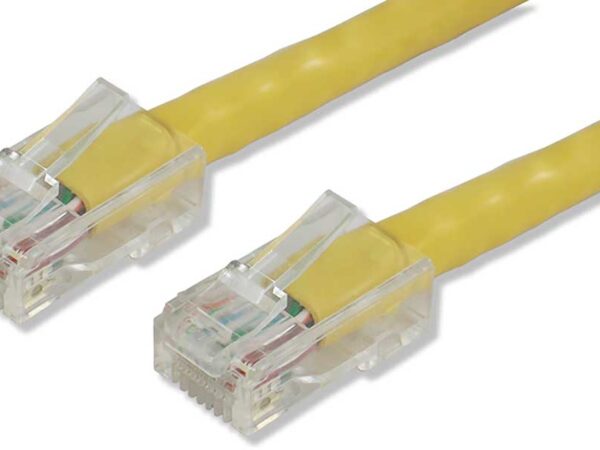What is a patch cable ethernet? We live in a world where cables keep nearly every aspect of society connected. Even wireless connections have cabling that runs in the background to ensure that we have access to all the amenities that they require. Though we may not give them much second thought, those cables are a critical part of society. One of those cables, called a patch cable, is essential for everyday use. Let’s get into the specifics of patch cables and what they do.
What Is A Patch Cable Ethernet
- What is a Patch Cable?
- Where to Use a Patch Cable
- The Differences Between Patch Cables and Structured Cabling
What is a Patch Cable?
When referring to a patch cable from a vendor like RS, it is actually referring to an ethernet cable that connects to a switch or router. They can connect to network devices like digital display monitors, computers, Wi-Fi access points, and just about any type of IoT (internet of things) device. The cable can even be used to connect a router to a switch.
Ethernet patch cables are generally made of conductors made of stranded copper. They are great to use in smaller, more condensed spaces, and have been designed to be flexible and change position without causing damage to the copper strands or terminating the connection altogether. Ethernet cables with a solid core construction can be damaged if they are handled too much, for instance.
Where to Use a Patch Cable
Ethernet patch cables come in lengths of Cat5e, Cat6, Cat6A, and Cat8. Each of these can connect devices to nearby networks though each has certain limitations on distance before there is a major dip in signal quality. For home use, a patch cable can be great for connecting your PC or gaming console to a router.
IT administrators in business settings will use patch cables to connect a pair (or more) of “backbone” devices like a panel to a switch or a switch to a switch. Patch cables send data signals while also carrying power over ethernet (PoE) that can power a remote device like a Wi-Fi access point.
Backbone equipment can stay the same over the life of that network. That said, the endpoint devices that they connect to will eventually change. So will the patch cable. Patch cables are generally only meant to connect equipment within the same room or within racks in that same room. Patch cables are handy when that network equipment needs to be replaced because it doesn’t require some great undertaking.
The Differences Between Patch Cables and Structured Cabling
We know that patch cables are better for short distances. On the contrary, structured cabling is in reference to major cabling deployment. That includes the necessary hardware, all of which is used to carry signals throughout the entire structure of a building. It is also a permanent component within the infrastructure of the building, something that will not get moved or disturbed over its lifetime.
Structured cabling is most ideal for support systems like IT networks and telephone services. They are also capable of transmitting data over 300 feet. There are generally six subsystems to structure cabling: horizontal cabling, backbone cabling, work area, entrance facility (EF), telecommunications room (TR), and equipment room (ER).
In specific, horizontal cabling is in reference to plenum- or riser-rated cabling. This kind of cabling connects telecommunication rooms to work areas or individual outlets in a certain area. That cabling runs through conduits, ceiling spaces, and walls to reach each outlet. Should a change need to be made, it is a lot more time-consuming and costly to make changes. That said, the connection is much more comprehensive and stable for larger support networks than a patch cable would be.



